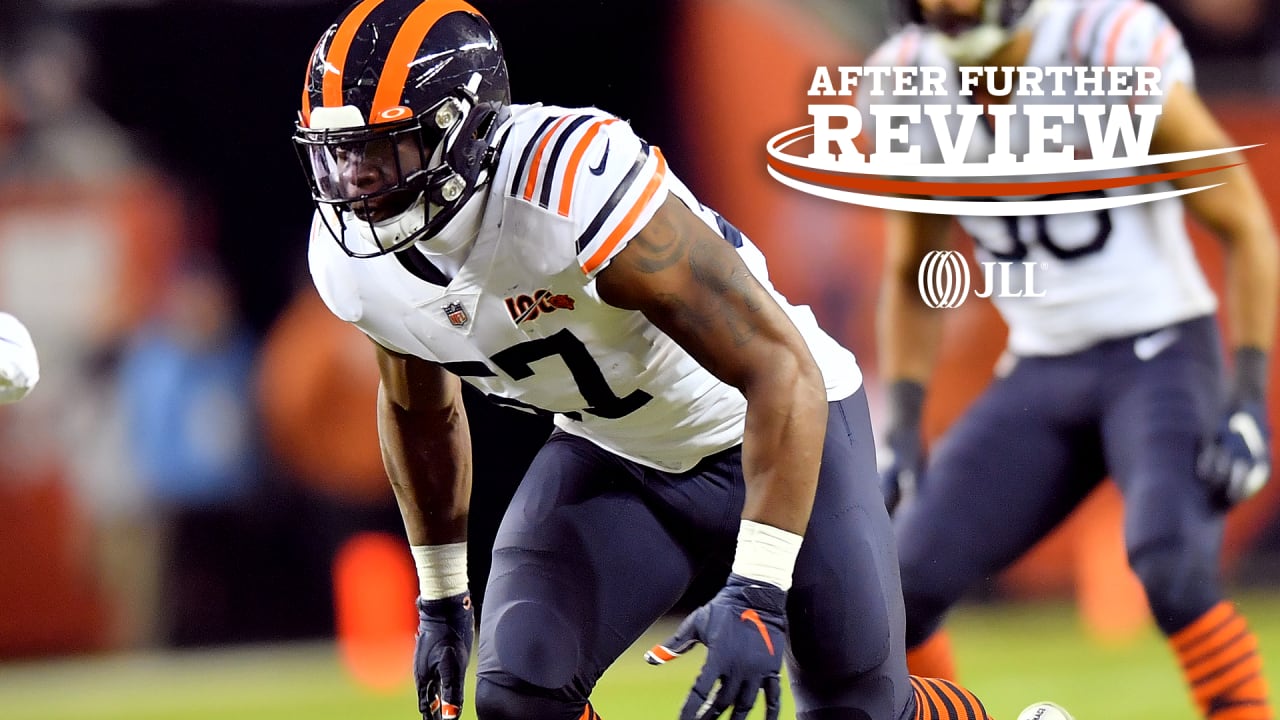Staley Da Bear
Well-known member
- Mar 16, 2019
- 2,085
- 0

(2) The latest example of the Bears successfully employing their “next-man-up” philosophy on defense came early in Thursday night’s game.
The Bears were already playing without three injured defensive starters in tackle Akiem Hicks (elbow), inside linebacker Danny Trevathan (elbow) and cornerback Prince Amukamara (hamstring). But then things went from bad-to-worse when inside linebacker Roquan Smith exited with a pectoral injury he suffered on the Cowboys’ game-opening 17-play, 75-yard touchdown drive.
The Bears’ leading tackler, who had been playing extremely well in recent weeks, was replaced by Kevin Pierre-Louis. The unheralded six-year NFL veteran stepped in and recorded five tackles, one tackle-for-loss, one quarterback hit and two pass breakups.
Other players who helped fill the void for injured teammates included tight ends Jesper Horsted (4 catches for 36 yards) and J.P. Holtz (3-56), who replaced the injured Trey Burton, Adam Shaheen and Ben Braunecker; right tackle Cornelius Lucas III, who made his second start in place of Bobby Massie; and cornerback Kevin Toliver II, who filled in for Amukamara.
“After watching the tape, I thought we had a lot of guys that stepped up in different roles,” Nagy said. “We appreciate that. That part’s good.”
It appears that the Bears may have to continue to rely on Pierre-Louis, who is in his first year with the team after spending his first five NFL seasons with the Seahawks (2014-16), Chiefs (2017) and Jets (2018).
Asked about Smith’s prognosis Monday, Nagy said: “Just like I said yesterday, we’re still getting more information. It doesn’t look good. But we have some time here to get more information on him. We’re going to do that.”
(3) One key to the offense’s success Thursday night was that the Bears finally got a productive game from their tight ends.
Horsted and Holtz—which sounds more like a law firm than a pair of NFL teammates—combined to catch seven passes for 90 yards. In the Bears’ previous six games, their tight ends had produced a total of seven receptions for 73 yards.
“Tight ends are big in any offense,” Nagy said. “You want to be able to have production from your tight ends. They help out in the run game; you saw that [Thursday] night. And then they help out in the pass game in certain areas. All tight ends are different. J.P. Holtz is different from some other U-style tight ends, but he’s been able to play both. It’s just a benefit when you don’t always have to throw to wide receivers.”
Neither Holtz nor Horsted opened the season on the Bears’ 53-man roster. Holtz was claimed off waivers Sept. 11 from the Redskins, while Horsted was promoted from the practice squad Nov. 20.
Nagy is still learning what both players can do. “You don’t know exactly what you’re getting from them,” he said. “They’re new to the offense, let alone their skillset. I think now we’re kind of getting an idea what their strengths and weaknesses are, and we’re trying to feed off their strengths.”
Holtz set up the Bears’ first touchdown Thursday night, turning a short reception into a 30-yard gain on a perfectly-executed screen pass.
“We caught them in a blitz,” Nagy said. “Sometimes if you run that same play versus drop eight, it’s a bad play call. But it ends up being a good play call. We got them in a blitz, and then the guys executed it. Timing, the execution, the details of why you run that route, why you block the way you block in that type of gap screen … that’s when you put on for down the road clinic.”
